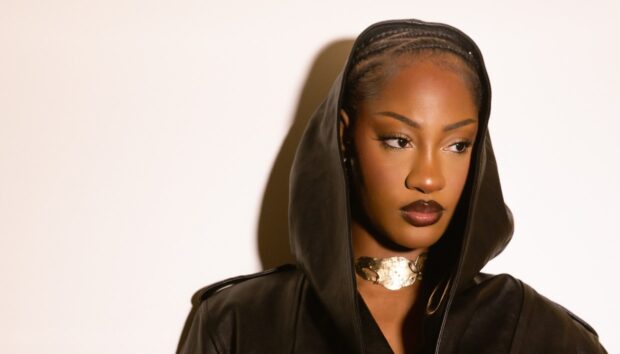
Whether you’re an artist on the rise, or you’ve recently launched a label, creating a unique and eye-catching music video is a great way to promote yourself. Even if you don’t like Kanye West, you’ve probably seen clips and memes from his Spike Jonze-produced video with Lil Pump. But in the digital age, you don’t have to be Spike Jonze to make a music video happen, nor do you need his massive budget.
Making a music video on a tight budget really means thinking creatively. “Music videos can be experimental films or short stories, animations or collages of found footage,” filmmaker Insa Langhorst says. “You can also go crazier with effects than in most other types of video or film without it being cheesy or amateurish.” Just because it’s inexpensive, doesn’t mean it has to look cheap. After all, the video will be the visual representation of your sound.
To help guide you through the music video creation process, we spoke to three film makers, each with experience in producing on limited budgets. Read on to find out about the challenges they experienced, and discover the best in low-cost technology tips.
“First, make sure you know what the artist wants from of the music video,” says Langhorst, who’s been making films for nine years. Langhorst created the music video to ‘Babcia‘ by Berlin producer VONDA7. The two of them discussed the concept ahead of time, and VONDA7 came prepared with visual examples. “Since it was clear that no budget was involved, we wanted to keep the work on all sides as manageable as possible, so we decided to use found footage,” Langhorst says. Platforms like archive.org were used to collect clips, which were then edited together. Shutterstock, Dissolve, and Videohive are also good options for footage, and B-roll.
“Concept is crucial, no matter what kind of video you’re shooting”, says Elad Magdasi. “A lot of things can be fixed in the editing, but making sure I know what the overall concept is is key.” Originally from Tel Aviv, Magdasi now lives in Berlin, and has created animated visuals in videos for artists like Deadmau5, Skrillex, The Chainsmokers, and Borgeous. He also makes videos for his label, Front Left Records, and says depending on what you want to achieve, making a video isn’t really that difficult. “The technicality [aspect] is not that hard, it’s more about the concept of the video. Video editing is a very basic concept—select, trim, edit, arrange—what you do with it is a whole other story.”
Keeping things easy also means keeping things scaled. “I’ve been an extra on videos for pop stars in the past, and even though they have big budgets, the videos have been extremely hard to execute because so many people are involved,” London-based producer and vocalist Josh Caffe says. Caffe has served as a creative director on several music videos, including for his own tracks from the Death of Aquarius EP. For those videos which were shot on location using extras, Caffe says calling on a few friends helped save money. “Clubs, small independent galleries and warehouses can be great locations to film, and if you know people who work or live at any of these places, it’s good to tap them up,” he says. Creators or venue owners just might be willing to help you without pay if they know there’s something in it for them, be it a return favour, exposure, or even a few drinks. “When Super Drama made the video for ‘Ultra‘ we shot at Dalston Superstore and invited our friends to come and have some [free] drinks.” After a few beers and some dancing, the video had all the nightclub footage it needed.
Equipment is another story. While Magdasi insists on using a DSLR that’s capable of 120fps slow motion shooting, he also admits that iPhones can be great for cheap video shoots. “As long as you have a clear idea of the aesthetic you’re aiming for, the limitations a phone might have, or the extra gear you need, there is no reason why you should not use a phone. I think nowadays we are lucky to have a lot of ways of creating moving images.” He recommends buying a Steadicam for iPhone, which runs around €130. “Shooting handheld can look very mediocre, as a shaky frame takes the illusion of a professional video away,” he says. He also recommends apps like FiLMiC Pro, which features slo-mo, time-lapse, aspect-ratio options, and vertical-orientation mode; or Kinomatic Video Camera, which is loaded with features the pros use. “Those apps do help,” Magdasi says. “They let you manually set up parameters that the normal video app chooses for you. Then again, you should research about those parameters in advance to make sure you know what to do. Using an iPhone is not ideal, so I would prefer to have the most control I can, and those apps are great for that.”
If you are using a DSLR, Magdasi recommends using a wide-angle, zoom lens, a light reflector and of course a Steadicam. Josh Caffe says the director for ‘Black Magik Dawn‘ used the Lumix GX80, “which shot really well.” Though he also says it depends on whether you’re shooting day or night, outdoors or indoors. If shooting indoors, you’ll need lighting equipment, which you can rent for a fairly low price from a local photography store. Once the camera and lighting are set, “the rest I do in my editing and post-production programs,” Magdasi says.
For Magdasi’s money, all editing software is basically the same. “They all have the same functions any editor needs to make a great music video,” he says. Though Langhorst recommends DaVinci Resolve. “It’s quite easy to get a grasp of and leaves you with a lot of options for editing. [It also has] an easy workflow and amazing colour-grading features.” As for post-production, that’s something you should probably plan on budgeting for, Magdasi says. “Post-production is not something for beginners. I would recommend to outsource. Langhorst says you can save money on post-production by making sure you properly prepare your shoot and are realistic about your limitations. “I am not great at color grading, but you can do amazing things with it, adding a lot to the tone of your video. It is totally possible to do this yourself, especially with programs like DaVinci Resolve,” she says. While this will save you money, it will also take a lot of time to learn on your part, so weigh your options.
Perhaps one of the biggest financial risks when making a music video is outdoor filming. If anything goes wrong, you are financially liable. “Make sure you’re aware of any health and safety risks beforehand and take steps to make sure you’re covered if necessary,” Caffe says. “Trust me, you don’t want the police getting involved during any of your videos.” This is where working with someone experienced comes in handy, and Caffe again recommends reaching out to friends for help. “All the directors I’ve worked with, they’ve been friends,” he says. “I’ve felt drawn into their worlds visually and they’ve felt the same with my music so it’s made the process of working together really enjoyable, easy and collaborative.” He also advises against being too ambitious with what you’re creating, as it could backfire even if the video is initially a success. “If you have a small budget, be realistic with that. You might want to make a really glossy over-produced video, but sometimes these types of videos don’t age well. Creating something that captures the essence of the song is the main thing, that’s what the videos are there to do.”
Langhorst says that even if the video is low-budget, you should be prepared for all eventualities. “Usually people don’t plan in extra time or money, but in film it happens that things take longer or get more expensive,” she says, which again is why preparation is key. “Another important thing is communication with the team. Make sure everyone knows what they are in for and that everyone is happy and working towards the same goal!”
Magdasi agrees, and says the best way to pull off a low-budget shoot in style is to find ways to make it look expensive without spending money. “Make up for the fact that you don’t have the state-of-the-art gear by catching the eyes with other things—a strong concept, good actors, extra-nice locations. Many low-budget videos look like million-dollar videos,” he says. That also means making sure the video’s composition and framing are spot on, which really just takes practice. “Creating beautiful frames is key. If the compositions look bad, the overall video will work less. The only way to learn in my opinion is by looking at other videos and trying to figure out what makes those frames pop. Read online, there are many tutorials about composition. The gear itself matters less if you plan your video correctly.”















